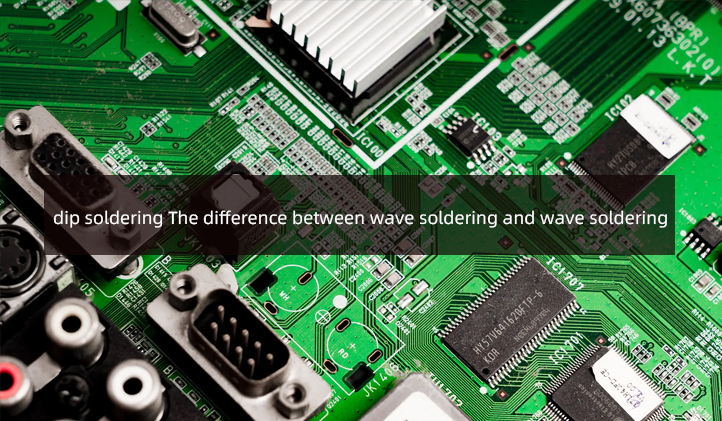The difference between dip soldering and wave soldering?

Dip soldering and wave soldering are two common soldering techniques used in PCB Assembly processing. The main difference between them lies in the method of applying solder:
Dip soldering: The solder remains stationary, and the PCB is moved up and down so that its soldering surface makes contact with the solder to form a joint.
Wave soldering: The solder forms a flowing wave, and the PCB passes through this wave via a conveyor belt, allowing the molten solder to create the connections.
Dip Soldering Process
Dip soldering can be performed manually or using automated machines, allowing multiple components to be soldered simultaneously. However, since the solder in the dip soldering process remains still, continuous operation leads to issues such as flux carbonization and solder oxidation. These create unwanted solder residues that float on the surface of the molten solder. If these residues enter the solder joints, they can weaken the connection, reducing its mechanical strength. As a result, frequent manual cleaning of the solder surface is required.
Advantages and Disadvantages of Dip Soldering
Advantages:
Simple equipment with relatively low processing costs.
Suitable for certain specific soldering applications.
Disadvantages:
Since the solder remains stationary, oxidation residues can adhere to solder joints, affecting quality.
Air bubbles may form, leading to weak or defective solder joints.
The entire PCB is exposed to heat for an extended period, increasing the risk of warping and deformation.
Due to these limitations, dip soldering has largely been replaced by wave soldering.
Wave Soldering Process
Wave soldering involves directly exposing the PCB’s soldering surface to a wave of molten solder. The process includes the following steps:
1. The solder is heated and melted**, forming a continuous wave.
2. The PCB is transported on a conveyor belt** at a controlled speed, passing through the solder wave.
3. The flowing solder helps remove flux residues and gases**, improving solder joint quality.
Advantages and Disadvantages of Wave Soldering
Advantages:
More stable soldering quality with consistent solder joints.
The movement of the solder wave helps eliminate flux residues, reducing defects.
The PCB’s contact time with molten solder is short, minimizing the risk of warping and deformation.
Disadvantages:
Higher equipment costs and more complex maintenance.
Limited applicability, especially for PCBs with double-sided surface-mounted components.
Due to its superior soldering quality and higher production efficiency, wave soldering has gradually replaced dip soldering as the preferred method in PCBA processing. However, dip soldering may still be used in certain specialized applications.

